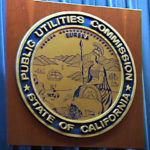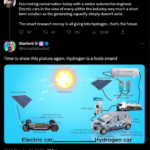In some circles official denials of a theory are taken as proof the theory is true. On Tuesday, the 3rd anniversary of the Fukushima Daichi earthquake, tsunami, and nuclear power plant disaster, US Nuclear Regulatory Commission Chairman Allison M. Macfarlane wrote on the NRC’s blog![]() that because of “the Pacific’s vast volume,” nuclear contamination from the crippled Fukushima power plants have dispersed, and Pacific Ocean radiation levels are “projected to be hundreds or a thousand or more times below already strict U.S. and international limits that protect public health and the environment.”
that because of “the Pacific’s vast volume,” nuclear contamination from the crippled Fukushima power plants have dispersed, and Pacific Ocean radiation levels are “projected to be hundreds or a thousand or more times below already strict U.S. and international limits that protect public health and the environment.”
This sort of talk is to be expected from a person whose job it is to oversee the nuclear power station development. So, too, is his discussion of how the NRC set up a commission to study the Fukushima power plant disaster, and learn lessons![]() . It doesn’t necessarily indicate an NRC cover up of problems with nuclear power, but that the NRC would be staffed by true believers in nuclear power safety.
. It doesn’t necessarily indicate an NRC cover up of problems with nuclear power, but that the NRC would be staffed by true believers in nuclear power safety.
Lessons the NRC Chairman claim are being implemented at nuclear power plants around the U.S. However, the Government Accounting Office (GAO) issued a report![]() about the Fukushima crisis, and efforts to mitigate the demonstrated risks from the accident. The GAO report recommended more urgency on the part of the NRC, and International agencies, in tackling the issues with nuclear power plant safety, especially in the area of ensuring monitoring systems remain functional following accidents.
about the Fukushima crisis, and efforts to mitigate the demonstrated risks from the accident. The GAO report recommended more urgency on the part of the NRC, and International agencies, in tackling the issues with nuclear power plant safety, especially in the area of ensuring monitoring systems remain functional following accidents.
As we reported earlier, the Woods Hole Institute believes there isn’t enough government monitoring of radiation in the Pacific Ocean. WHOI scientists have been working to debunk the radiation fearmongering on the Internet, and have set up an independent crowd-funded project![]() to measure radiation levels in the Ocean along the U.S. West Coast. As of late January, the project hadn’t detected any radiation from Fukushima along the West Coast, but that’s because the so-called “plume” hasn’t arrived, yet. The plume’s arrival is expected in March or April, 2014. The WHOI website shows data from a small fraction of the planned monitoring stations, and that Cesium-134 is still undetectable, and Cesium-137 concentrations are barely detectable.
to measure radiation levels in the Ocean along the U.S. West Coast. As of late January, the project hadn’t detected any radiation from Fukushima along the West Coast, but that’s because the so-called “plume” hasn’t arrived, yet. The plume’s arrival is expected in March or April, 2014. The WHOI website shows data from a small fraction of the planned monitoring stations, and that Cesium-134 is still undetectable, and Cesium-137 concentrations are barely detectable.
If the NRC Chairman is to be believed at face value, the US government is monitoring the ocean for radioactive contamination. If true, then why did the Woods Hole Institute feel it necessary to set up an independent radiation monitoring service?
An excellent way the NRC could qualm our fears about radiation in the Pacific ocean, would be to monitor the ocean for radiation, and publish the data. The EPA’s RadNet monitoring network only monitors the atmosphere, and not the ocean.
- Is there enough Grid Capacity for Hydrogen Fuel Cell or Battery Electric cars? - April 23, 2023
- Is Tesla finagling to grab federal NEVI dollars for Supercharger network? - November 15, 2022
- Tesla announces the North American Charging Standard charging connector - November 11, 2022
- Lightning Motorcycles adopts Silicon battery, 5 minute charge time gives 135 miles range - November 9, 2022
- Tesla Autopilot under US Dept of Transportation scrutiny - June 13, 2022
- Spectacular CNG bus fire misrepresented as EV bus fire - April 21, 2022
- Moldova, Ukraine, Georgia, Russia, and the European Energy Crisis - December 21, 2021
- Li-Bridge leading the USA across lithium battery chasm - October 29, 2021
- USA increasing domestic lithium battery research and manufacturing - October 28, 2021
- Electrify America building USA/Canada-wide EV charging network - October 27, 2021












